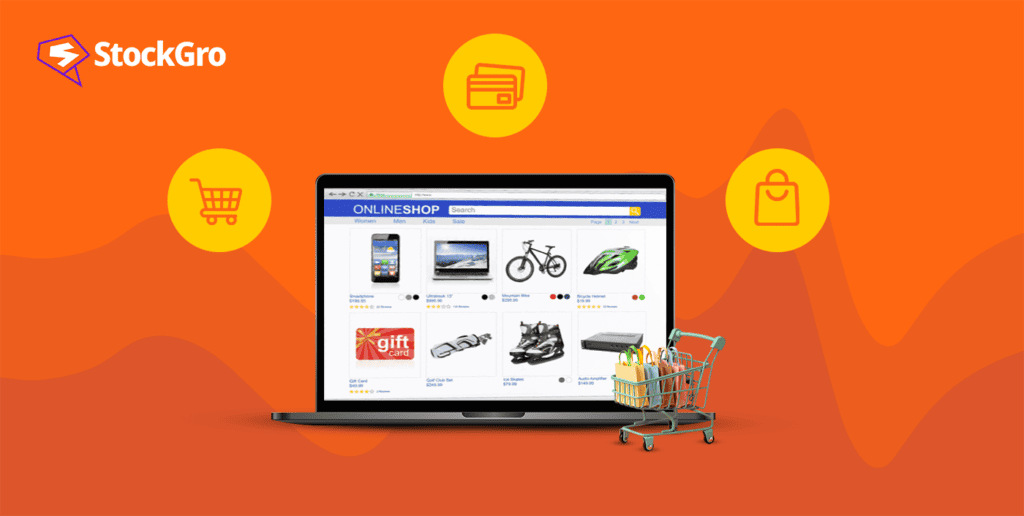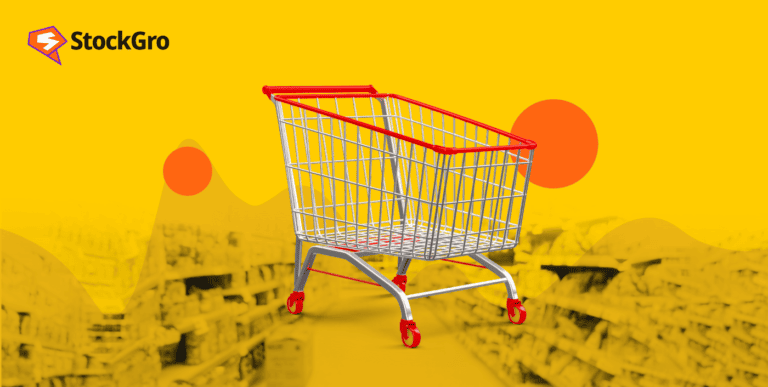
India’s e-commerce industry is a giant in the making. From its small beginnings in the late 1990s during the boom of the dot com era, to its current position as one of the world’s fastest-growing markets, the journey has been remarkable.
In this article about the e-commerce industry of India, we’re going to delve into the industry’s landscape, explore its history, size, growth trajectory, key players, defining moments, and exciting future prospects.
What is the e-commerce industry in India?
E-commerce refers to companies and individuals that sell goods and services over the internet. E-commerce today operates in several segments and can be conducted over any device that can connect to the internet and access a web browser.
The e-commerce industry in India has been on an upward growth trajectory for several years. Today, its value stands at more than ₹4.5 lakh crore. Several growth factors, including increased smartphone penetration, increased affluence and low data prices, are helping the industry grow at unprecedented levels, most recently at 21.5%. CAGR stands at 27%.
In 2024, the country’s e-commerce market is expected to reach US $111 billion and US $200 billion by 2026. This is because India gained more than 125 million online shoppers in the past three years, and the market expects to add more than 80 million more in 2025.
You may also like: From colonial legacy to global ambition: The Indian insurance sector
History and growth of the e-commerce industry in India
Early history
E-commerce in India started emerging as an industry in the late 1990s with the popularisation of dial-up internet. Then-famous ventures like Fabmart and Indiaplaza emerged, which offered online customers catalogues of books and music CDs. However, these offerings didn’t resonate with the consumer much due to slow internet speeds, limited payment options, and also because most people didn’t have access to the internet.
Top companies like Amazon and Flipkart also entered the market around this time, bringing into market industry-changing features like cash-on-delivery, customer service, and easier-to-navigate websites.
Decade of growth (2010s)
The 2010s proved to be a golden decade for Indian e-commerce. Smartphone penetration skyrocketed, affordable data plans became popular, and digital payments platforms like Paytm and UPI revolutionised online transactions. All this led to a boom in e-commerce sales as people started trusting websites, their payment providers, and the entire country started pushing towards digital.
By 2019, India’s e-commerce market size had reached US $60 billion, and it’s projected to touch US $350 billion by 2030. This translates to a CAGR in the high twenties.
Today, top e-commerce platforms in India include Flipkart, Amazon, Myntra, Nykaa, and BigBasket that have carved niches for themselves in fashion, beauty, grocery delivery, etc.
Future growth and development
Estimates say that there will be more than 830 million internet users in India by the end of 2024, which means that the boom in e-commerce is far from over. There are several factors which, we think, will make or break the industry in the next few decades:
- Tier 2 & 3 cities: A large part of India’s population is based in tier 2 and 3 cities, which are also large urban centres but a tad smaller and less developed than metro cities. The focus for e-commerce is expanding to include these cities and to make them serviceable with vernacular languages and hyperlocal logistics.
- Rural e-commerce: A large part of India lives further down the urbanisation scale, in villages and small towns far from big cities. Bridging this rural-urban divide is a priority and the industry makes use of government policy like CSC Grameen Sahyogi, which provides internet access and training to people living in these areas.
- Social commerce: Social media platforms like Instagram and TikTok are also becoming influential shopping destinations, blurring the lines between social interaction and online buying. Influencers or celebrities on these platforms who endorse certain brands and ‘influence’ consumer decisions are also becoming popular and brands are increasingly investing in these affiliate marketing tactics too.
- Sustainability: Concerns about the environmental impact of shipping goods several thousands of miles across the country (or even the world) are leading to a rise in sustainable packaging, green logistics, and eco-friendly products. Consumers are caring more and more about how their products are manufactured and delivered to them, and studies show that a large percentage of modern consumers are starting to pay more to buy products that have a smaller carbon footprint.
Also Read: Economics of the tourism and hospitality industry in India
Top ecommerce companies in India
Here are some top ecommerce companies in India with their last traded price and market at time of writing:
| Company | Price | Market Cap |
| Zomato | ₹133.30 | ₹1,16,116 cr |
| FSN E-Commerce | ₹173.40 | ₹49,505 cr |
| Indiamart Intermesh | ₹2,743 | ₹16,453 cr |
| Yaari Digital | ₹12.75 | ₹128 cr |
Opportunities and challenges
Despite the optimistic outlook on the industry, there are some challenges that could make or break investors’ faith. Here are some of them:
- Government support and policy decisions – Initiatives like “Digital India” and “Startup India” are encouraging people to shift to digital modes of payment, the supply for which is rapidly being absorbed by e-commerce websites. Many consumers now prefer to order goods from the comfort of their homes than to step out and visit a brick-and-mortar store.
- Tech advancements – E-commerce companies have gotten into trouble because they use ‘big data’ to monitor consumers’ activity online, study their behaviour, and send them targeted ads to increase the chances of conversion. Privacy issues, hence, are also important to understanding what exactly goes on behind the scenes of an e-commerce website – not to mention the increasing role that AI plays as well.
Also Read: Rise of the education sector in India: Potential and top stocks to invest
Conclusion
India is almost the perfect economy for the growth of e-commerce. With millions of people gaining access to smartphones and the internet every year, development of convenient and safe payment options like UPI, and increasing number of jobs that the industry creates every year, it seems like the ecommerce industry in India is a great place to invest in.
However, we encourage you to not blindly invest your money and do your own research before committing.

